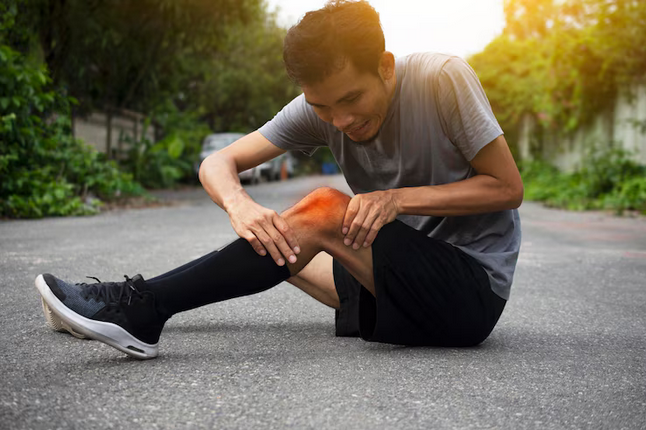Introduction:
Lower extremity injuries encompass a wide range of musculoskeletal conditions affecting the hips, knees, ankles, and feet. These injuries can occur due to various causes, including trauma, overuse, poor biomechanics, and inadequate conditioning. Understanding the nature, mechanisms, risk factors, prevention, and treatment options for lower extremity injuries is crucial for athletes, active individuals, healthcare professionals, and coaches alike. This comprehensive guide aims to provide valuable insights into lower extremity injury information
to facilitate better management and prevention strategies.
Anatomy of the Lower Extremities:
Before delving into specific injuries, it's essential to have a basic understanding of the anatomy of the lower extremities. The lower extremities comprise the pelvis, hips, thighs, knees, lower legs, ankles, and feet. These structures consist of bones, muscles, ligaments, tendons, and nerves, all of which work together to support weight-bearing activities, facilitate movement, and maintain balance and stability.
Common Types of Lower Extremity Injuries:
Lower extremity injuries can affect various parts of the leg and foot, with some of the most common types including:
- Ankle Sprains: Ankle sprains occur when the ligaments surrounding the ankle joint are stretched or torn, typically due to sudden twists or rolling movements. These injuries are common in sports and activities that involve rapid changes in direction or uneven surfaces.
- Knee Injuries: Knee injuries encompass a wide range of conditions, including ligament sprains (such as ACL or MCL injuries), meniscal tears, patellar tendonitis, and patellofemoral pain syndrome. These injuries can result from trauma, overuse, or biomechanical issues.
- Shin Splints: Shin splints, or medial tibial stress syndrome, involve pain along the inner edge of the shinbone (tibia) due to repetitive stress on the muscles and tissues surrounding the shin. They are prevalent in runners and athletes engaged in high-impact activities.
- Stress Fractures: Stress fractures are small cracks or breaks in the bone caused by repetitive stress or overuse, commonly affecting the shinbone, foot bones, and metatarsals. They are common in athletes who engage in activities with repetitive impact, such as running or jumping.
- Achilles Tendonitis: Achilles tendonitis is inflammation of the Achilles tendon, the large tendon connecting the calf muscles to the heel bone. It typically occurs due to overuse or sudden increases in activity level and can cause pain and stiffness in the back of the heel.
Mechanisms of Injury:
Understanding the mechanisms of lower extremity injuries can help identify risk factors and implement preventive strategies. Common mechanisms include:
- Direct Trauma: Direct blows, falls, collisions, and other forms of external force can cause acute injuries such as fractures, contusions, and ligament sprains in the lower extremities.
- Overuse: Repetitive movements, excessive training, and inadequate rest can lead to overuse injuries such as stress fractures, tendonitis, and muscle strains.
- Poor Biomechanics: Abnormalities in foot structure, gait mechanics, and lower limb alignment can increase the risk of injuries by placing excessive stress on specific tissues and joints.
- Improper Footwear: Ill-fitting or inappropriate footwear can alter biomechanics, reduce shock absorption, and increase the risk of foot and ankle injuries such as sprains and stress fractures.
Prevention Strategies:
Preventing lower extremity injuries involves a multifaceted approach that addresses modifiable risk factors and incorporates preventive measures such as:
- Proper Warm-Up: Engaging in dynamic warm-up exercises before physical activity can prepare the muscles, tendons, and ligaments for movement and reduce the risk of injury.
- Gradual Progression: Gradually increasing the intensity, duration, and frequency of training allows the body to adapt to stress and minimizes the risk of overuse injuries.
- Strength and Conditioning: Incorporating strength training, flexibility exercises, and functional movements into a comprehensive exercise regimen can improve lower limb strength, stability, and resilience.
- Proper Footwear: Wearing supportive and properly fitted footwear suitable for the activity can enhance shock absorption, stability, and biomechanical alignment, reducing the risk of foot and ankle injuries.
- Biomechanical Assessment: Conducting gait analysis and biomechanical assessments can identify structural abnormalities or movement patterns that may predispose individuals to lower extremity injuries.
Treatment Options:
Treatment for lower extremity injuries depends on the specific condition and severity but may include:
- Rest and Immobilization: Resting the injured limb and immobilizing it with splints, braces, or casts can promote healing and prevent further damage in acute injuries.
- Physical Therapy: Rehabilitation programs focusing on strengthening, flexibility, balance, and proprioception can help restore function and prevent recurrent injuries.
- Pain Management: Nonsteroidal anti-inflammatory drugs (NSAIDs), ice therapy, and other modalities may be used to manage pain and inflammation associated with lower extremity injuries.
- Orthotics and Bracing: Custom orthotic inserts or braces may be prescribed to correct biomechanical abnormalities, provide support, and reduce stress on injured tissues.
- Surgery: In severe cases or when conservative measures fail to alleviate symptoms, surgical intervention may be necessary to repair damaged structures or stabilize the affected joint.
Conclusion:
Lower extremity injuries are common and can have significant implications for mobility, function, and quality of life. Understanding the types, causes, prevention, and treatment options for these injuries is essential for athletes, active individuals, healthcare professionals, and coaches alike. By implementing preventive strategies, addressing modifiable risk factors, and seeking appropriate treatment when necessary, individuals can reduce the incidence and severity of lower extremity injuries, enabling them to maintain an active and healthy lifestyle. Further research and innovation in injury prevention and treatment techniques can continue to improve outcomes and promote safer participation in physical activities.





Comments